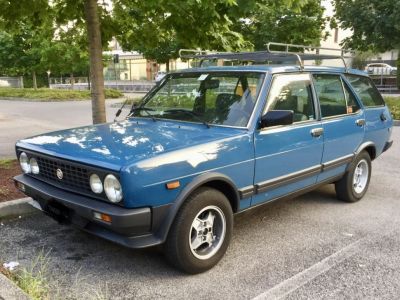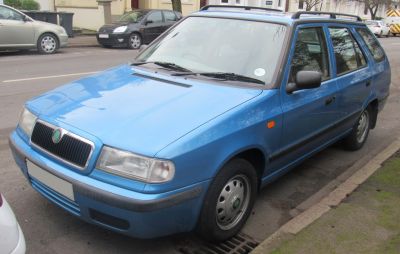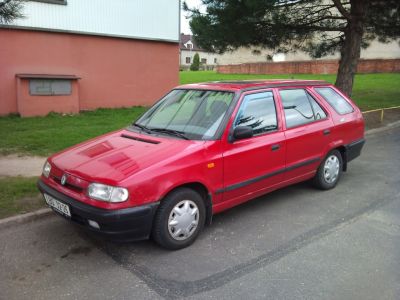 1992 Mitsubishi Lancer V Wagon Dimensions, Size & Specs
1992 Mitsubishi Lancer V Wagon Dimensions, Size & SpecsMeasurements of the 1992 Mitsubishi Lancer V Wagon, engineered for optimal performance and comfort
| Dimensions | |
|---|---|
| Length: | 4275 mm168.3 in14.0 ft |
| Width: | 1690 mm66.5 in5.5 ft |
| Height: | 1420-1470 mm55.9-57.9 in4.7-4.8 ft |
| Trunk Capacity: | 470 liter16.6 cu ft |
| Trunk Capacity (Max): | 740 liter26.1 cu ft |
| Weight Specifications | |
| Curb Weight: | 1035-1210 kg2282-2668 lbs |
| Maximal permitted Weight: | 1600-1680 kg3527-3704 lbs |
| Tire Specifications | |
| Rims Sizes: |
|
| Tire Sizes: |
|
The Mitsubishi Lancer V Wagon, produced from 1992 to 2000, is a compact station wagon designed to offer a blend of practicality and versatile use. Measuring 4275 mm (168.3 inches) in length, 1690 mm (66.5 inches) in width, and standing between 1420 mm and 1470 mm (55.9 to 57.9 inches) tall, this generation fits well into the compact wagon category, providing ample interior space without sacrificing maneuverability. The curb weight of the Lancer V Wagon ranges between 1035 kg and 1210 kg (2282 to 2668 lbs), depending on specific configuration and options, while the maximum weight capacity lies between 1600 kg and 1680 kg (3527 to 3704 lbs), supporting both passengers and cargo efficiently.
One of the standout features of the Lancer V Wagon is its generous luggage capacity. With the rear seats in the upright position, the cargo space measures 470 liters (16.6 cubic feet), which expands significantly to 740 liters (26.1 cubic feet) when the rear seats are folded down, making it highly suitable for families and individuals needing to transport larger items or extra luggage.
The wagon rides on rim sizes ranging from 13 to 14 inches and uses tire sizes 175/70 R13 or 185/70 R14, which contribute to a comfortable ride quality and balanced handling. The vehicle’s relatively compact dimensions and weight, combined with practical luggage space, make it a strong contender among early 1990s compact station wagons, delivering reliability and functionality for everyday use and road trips alike.
Discover the standout features that make the 1992 Mitsubishi Lancer V Wagon a leader in its class
Have a question? Please check our knowledgebase first.
The 1992 Mitsubishi Lancer V Wagon measures 4275 mm (168.3 inches) in length, 1690 mm (66.5 inches) in width, and has a height ranging between 1420 mm and 1470 mm (55.9 to 57.9 inches), depending on the specific model variant. These dimensions place the Lancer V Wagon firmly within the compact station wagon category, offering a balanced footprint for urban maneuverability while still providing practical space for passengers and cargo. The relatively modest height contributes to a sporty yet functional profile, making it a versatile choice for a variety of driving conditions.
The curb weight of the Mitsubishi Lancer V Wagon ranges between 1035 kg and 1210 kg (2282 to 2667 lbs), while its maximum weight is between 1600 kg and 1680 kg (3527 to 3704 lbs). This weight range reflects the varying trims and options available throughout its production run from 1992 to 2000. The relatively light curb weight enhances the car's agility and acceleration, contributing positively to performance dynamics. Similarly, a lighter vehicle typically achieves better fuel efficiency, as less energy is required to move the car. However, the maximum weight, which accounts for passengers and cargo, also indicates the vehicle's robustness and capacity to handle a full load without significant performance degradation.
The Mitsubishi Lancer V Wagon offers a practical luggage capacity of 470 liters (approximately 16.6 cubic feet) with the rear seats in place, providing ample space for everyday groceries and luggage. When the rear seats are folded down, this capacity expands significantly to 740 liters (about 26.1 cubic feet), allowing for the transport of larger items or increased cargo volume. This flexibility makes the Lancer V Wagon suitable for both daily commuting and weekend trips where extra storage space is required.
Yes, the 1992 Mitsubishi Lancer V Wagon fits comfortably into a standard single-car garage. Typical garage dimensions for a single car are about 2400 to 3000 mm (94.5 to 118 inches) wide and about 4800 mm (189 inches) deep. With a width of 1690 mm (66.5 inches) and a length of 4275 mm (168.3 inches), the Lancer V Wagon provides ample clearance on all sides for easy parking and entry/exit. Its height of up to 1470 mm (57.9 inches) also ensures there is sufficient vertical space for most standard garages. This makes the vehicle practical for homeowners without the need for specialized parking accommodations.
The Mitsubishi Lancer V Wagon came equipped with rim sizes of either 13 or 14 inches, paired with tire sizes 175/70 R13 or 185/70 R14. These relatively compact dimensions contribute to a smooth and comfortable ride, particularly suited to urban and suburban driving. Smaller rims with higher-profile tires tend to absorb road imperfections better, reducing the harshness of bumps and uneven surfaces. Moreover, these tire dimensions support good grip and handling while maintaining a balance between ride comfort and fuel efficiency. These sizes are typical for compact station wagons of the era and favor practical everyday use over sporty handling.
Compared to its predecessors, the 1992 Mitsubishi Lancer V Wagon saw an increase in overall dimensions, reflecting a trend toward more spacious and versatile vehicles in the early 1990s. The length of 4275 mm (168.3 inches) marked a noticeable growth, providing enhanced passenger and cargo space compared to earlier Lancer generations that typically measured shorter. Width and height also evolved, offering improved interior comfort without compromising maneuverability. This increase in size contributed to a more mature design, increased practicality, and a broader appeal for small families or those needing additional cargo space not available in earlier Lancer sedans or hatchbacks.
The 1992 Mitsubishi Lancer V Wagon holds its own well within the compact station wagon segment of the 1990s. With a length of 4275 mm and luggage capacity up to 740 liters with seats folded, it is comparable to competitors like the Toyota Corolla wagon or Honda Civic wagon from the same period, both of which offered similar dimensions and flexible cargo space. The Lancer's width of 1690 mm also aligns with industry standards for compact wagons, providing enough room for comfortable front and rear seating without overly increasing the vehicle's footprint. Its weight range, between 1035 to 1210 kg, is competitive, balancing structural integrity with agile handling. Overall, it was a practical choice for drivers looking for reliability and versatility in a compact, affordable wagon.
The Mitsubishi Lancer V Wagon's height varied between 1420 mm and 1470 mm (55.9 to 57.9 inches) depending on the specific trim or suspension setup. The taller configurations usually provided slightly increased interior headroom, improving comfort for taller passengers, especially in the rear seats. Increased height could also contribute to better cargo volume in certain variants. From an aerodynamic perspective, a higher roofline generally causes more drag, potentially affecting fuel efficiency slightly when compared to lower models. However, the difference within this 50 mm range is minor and unlikely to dramatically impact overall performance but does represent a tradeoff between practicality and aerodynamics.
The maximum weight capacity of the Mitsubishi Lancer V Wagon ranges between 1600 kg and 1680 kg (approximately 3527 to 3704 lbs), representing the total permitted weight including the vehicle itself, passengers, cargo, and fuel. Considering the curb weight ranges from 1035 kg to 1210 kg (2282 to 2667 lbs), this means the car can carry roughly 570 to 670 kg (1257 to 1477 lbs) of load including occupants and baggage without compromising safety or performance. This figure indicates a practical and versatile wagon capable of handling moderately heavy cargo, making it suitable for daily use, family trips, or light commercial purposes where both space and reasonable load capacity are important.
The 1992 Mitsubishi Lancer V Wagon stands out within the Lancer family primarily due to its body style and utility focus. Unlike sedan or hatchback variants, the V Wagon's station wagon design prioritized cargo flexibility and practicality, featuring an extended rear section for increased luggage capacity (470 liters standard, up to 740 liters with seats folded). Design-wise, it retained the compact and aerodynamic proportions characteristic of early '90s Lancers but offered a higher roofline and larger rear access for easier loading. Mechanically, it shared much with the sedan and hatchback siblings, delivering familiar Mitsubishi reliability, but its combination of size, versatility, and curb weight made it a sensible choice for buyers seeking a capable family car or versatile daily driver during its production from 1992 to 2000.
Discover similar sized cars.

| Production: | 1975-1985 |
|---|---|
| Model Year: | 1975 |
| Length: | 4264 mm167.9 in |
| Width: | 1650 mm65.0 in |
| Height: | 1400 mm55.1 in |

| Production: | 1998-2001 |
|---|---|
| Model Year: | 1998 |
| Length: | 4237 mm166.8 in |
| Width: | 1635 mm64.4 in |
| Height: | 1420 mm55.9 in |

| Production: | 1995-1997 |
|---|---|
| Model Year: | 1995 |
| Length: | 4235 mm166.7 in |
| Width: | 1635 mm64.4 in |
| Height: | 1420 mm55.9 in |

| Production: | 1996-2002 |
|---|---|
| Model Year: | 1996 |
| Length: | 4245-4375 mm167.1-172.2 in |
| Width: | 1690 mm66.5 in |
| Height: | 1460 mm57.5 in |
